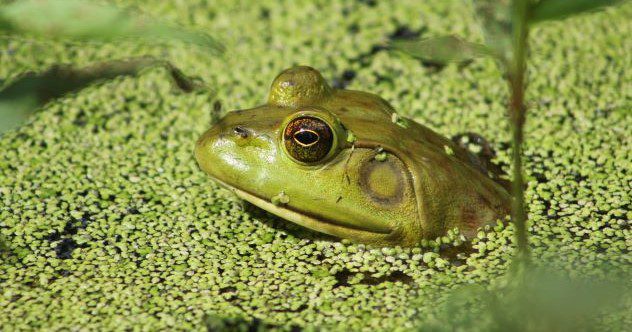Life has a way of throwing us into situations where survival seems almost impossible. Yet, in those moments, both animals and humans find incredible ways to escape the clutches of death. Whether through quick thinking, clever strategies, or sheer willpower, these stories of survival are nothing short of awe-inspiring.
Animals, for instance, don’t just run from danger—they come up with cunning plans and even fake their own deaths to avoid predators. Humans, too, have their own astonishing tales of survival. From diving into a pool to escape fire to enduring hours at sea after being swept away, these stories highlight the extraordinary lengths people will go to when faced with life-threatening danger. This list explores ten thrilling examples of such moments where the determination to live triumphs over the odds.
Related: 10 Brave Predators Which Hunt Dangerous and Deadly Prey
10 Animals Plan Their Escapes
When danger strikes, animals don’t just run—they strategize. In the wild, the ability to outsmart a predator can mean the difference between life and death. Many animals have developed intricate escape plans that showcase their intelligence and adaptability. These plans often involve careful observation, deceptive tactics, and even teamwork to ensure survival.
For instance, some prey animals use a technique called “predator inspection,” where they cautiously approach and observe their predator. This allows them to gather crucial information about the threat and decide on the best escape route. Fish, birds, and even mammals like gazelles have been observed employing this strategy. Such actions demonstrate that fleeing isn’t just about speed—it’s about cunning and strategy.
One particularly fascinating example is how certain lizards drop their tails when caught. The detached tail continues to wriggle, distracting the predator and allowing the lizard to escape. Such sophisticated behaviors highlight the remarkable ways animals ensure their survival in a dangerous world.[1]
9 Playing Dead to Stay Alive
In the animal kingdom, playing dead is a common survival tactic known as thanatosis. This behavior can be remarkably effective in evading predators, as many predators lose interest in prey that appears lifeless. By feigning death, animals can sometimes avoid further attack, increasing their chances of survival.
Research has shown that animals like snakes, beetles, spiders, and even some mammals use thanatosis to their advantage. For instance, the adder spider is known to play dead for extended periods, lying motionless until the predator moves away. Similarly, red flour beetles can fake death for up to an hour, fooling predators into thinking they are no longer viable prey. This extended stillness is a testament to the effectiveness of this survival strategy.
The ability to convincingly play dead and remain motionless for prolonged durations highlights the incredible lengths animals will go to evade predators. By mastering the art of thanatosis, these creatures demonstrate a fascinating adaptation that enhances their survival in the wild.[2]
8 Sea Urchins’ Explosive Defense
Sea urchins, typically seen as slow and vulnerable due to their spiky exteriors, have a surprising defense mechanism when threatened by predators. Researchers have discovered that these seemingly passive creatures can execute a rapid, explosive escape response. This unexpected behavior is a remarkable adaptation for evading predators like starfish.
When a predator approaches, sea urchins can quickly contract their muscles, releasing stored energy that propels them away from danger. This sudden movement is not only effective in startling predators but also provides the sea urchin with a critical chance to escape. The ability to transform from a stationary creature to one capable of rapid, explosive movements highlights the sea urchin’s remarkable survival strategies in the wild.[3]
7 Ants’ Remarkable Rescue Operations
Ants, known for their incredible teamwork and organization, have taken their survival strategies to another level with life-saving operations. These tiny insects are the only known animals, aside from humans, to perform medical interventions on their injured peers. When an ant is wounded, fellow colony members spring into action, displaying a strong “not ready to die (yet)” spirit through their remarkable care and precision.
The African Matabele ant, in particular, has been observed performing these life-saving operations. After a raid on a termite nest, injured ants signal their distress by secreting pheromones. In response, their uninjured comrades carry them back to the safety of the nest. Once there, the injured ants are meticulously groomed, and their wounds are cleaned to prevent infection. This process significantly increases their chances of survival, allowing the colony to maintain its fighting force.
This sophisticated level of care demonstrates the extraordinary lengths to which ants will go to ensure the survival of their colony. By treating their injured, ants not only enhance the recovery of individual members but also maintain the overall strength and efficiency of the colony. Such advanced social behavior highlights the complex and cooperative nature of these fascinating insects.[4]
6 Frog Saunas Save Lives
Frogs around the world face a deadly fungal disease called chytridiomycosis, which has caused significant declines in amphibian populations. In an innovative effort to combat this threat, scientists in Australia have developed a unique treatment method: frog saunas. This novel approach involves placing frogs in warm, humid environments to kill the fungus without harming the amphibians. These treatments exemplify the “I’m not ready to die (yet)” spirit, as they dramatically improve the survival chances of these vulnerable creatures.
The idea behind frog saunas is to use heat to eradicate the fungus Batrachochytrium dendrobatidis, which cannot survive at higher temperatures. Researchers have successfully reduced infection rates by exposing infected frogs to carefully controlled heat treatments and giving these amphibians a fighting chance. This method not only saves individual frogs but also helps preserve entire species threatened by this devastating disease. Frog saunas highlight the extraordinary lengths scientists will go to ensure these amphibians don’t die unnecessary deaths, embodying the essence of survival against the odds.[5]
5 Diving into Danger to Escape Flames

In a heart-stopping display of courage and quick thinking, a man faced with a rapidly spreading fire found an unconventional escape route. Trapped by the encroaching flames with nowhere else to go, he dove into a swimming pool, demonstrating an “I’m not ready to die (yet)” spirit in the most dramatic way possible. This desperate act highlights the lengths to which individuals will go to survive when faced with imminent danger.
As the fire raged around him, the man realized that the only way to avoid being engulfed by the flames was to take refuge in the water. Submerging himself, he managed to avoid the intense heat and smoke that would have otherwise overwhelmed him. His quick decision to use the pool as a shield from the fire was both ingenious and life-saving, showcasing his determination to survive against all odds.
This incredible escape underscores the importance of quick thinking and adaptability in life-threatening situations. By using the resources available to him in an unexpected way, the man was able to buy crucial time until help arrived. His story is a testament to human resilience and the will to live despite seemingly insurmountable odds.[6]
4 Escaping Through a Predator’s Butt
In the bizarre world of survival tactics, some prey have developed truly unique methods to avoid becoming a meal. One such strategy involves escaping through a predator’s digestive system—specifically, its rear end. This incredible escape mechanism is not only unusual but also highly effective, showcasing a remarkable “I’m not ready to die (yet)” attitude in the animal kingdom.
Certain species of snails and beetles have been observed employing this daring escape strategy. For instance, a certain water beetle can survive being swallowed by a toad, only to escape unharmed by traveling through the toad’s digestive tract and exiting via the anus. This process, while seemingly perilous, allows the beetle to emerge unscathed and continue its life, highlighting its resilience and adaptability.
This extraordinary method of escape underscores the lengths to which prey will go to ensure their survival. By enduring the journey through a predator’s digestive system, these animals demonstrate an incredible will to live and a remarkable ability to adapt to extreme situations. Their story is a testament to the ingenuity and resourcefulness found in nature’s most determined survivors.[7]
3 Lion with Three Legs Defies Death
In the wild, survival often requires extraordinary feats of bravery and resilience, especially for those with physical disabilities. A lion with only three legs managed to defy the odds in a dramatic display of the “I’m not ready to die (yet)” spirit. This incredible animal faced a daunting challenge: crossing a predator-infested river to reach safety.
Despite its disability, the lion plunged into the river, determined to survive. The waters were teeming with crocodiles, ready to snatch any unwary prey. Yet, the lion’s sheer determination and strength saw it through the perilous journey. Against all odds, it successfully swam across, showcasing an incredible will to live and an unyielding spirit.
This lion’s story is a testament to the resilience and adaptability of animals in the face of adversity. Despite significant physical challenges, the lion demonstrated that the drive to survive can lead to astonishing feats. Its triumphant swim across a dangerous river serves as an inspiring reminder of the tenacity inherent in all living beings. [8] [8]
2 Rescuing a Dog from the Brink
In South Carolina, a heart-wrenching case of animal abandonment turned into an inspiring story of survival and second chances. A dog left to die in a dumpster was discovered just in time by a kind-hearted rescuer. Emaciated and weak, the dog was barely clinging to life, embodying the “I’m not ready to die (yet)” spirit through sheer willpower and determination.
The rescue operation was nothing short of miraculous. The dog was rushed to a local animal shelter, where it received immediate medical attention and care. Despite the odds, the dog began to recover, slowly regaining its strength and vitality. This heartwarming story highlights the incredible resilience of animals and the compassion and dedication of those who work tirelessly to save them. The dog’s journey from the brink of death to a hopeful new beginning is a powerful reminder of the impact of kindness and the will to survive.[9]
1 Swept Away and Rescued Against All Odds
In a harrowing tale of survival, a woman swimming at a Japanese beach was swept out to sea by strong currents. For 37 hours, she clung to life, drifting further and further from the shore. Her story is a profound example of the “I’m not ready to die (yet)” spirit, showcasing her determination to stay alive against overwhelming odds.
Throughout her ordeal, the woman managed to stay afloat and conserve her energy despite the challenging conditions. As hours turned into days, hope seemed to dwindle, but her resolve remained unbroken. Her survival was a testament to human endurance and the instinct to fight for life, even in the most desperate situations.
Remarkably, after nearly two days adrift, she was spotted by a passing fishing boat 50 miles (80 kilometers) away from where she had been swept away. The crew quickly rescued her, bringing an end to her terrifying ordeal. This incredible story of survival serves as a reminder of the strength of the human spirit and the will to live, even when the odds are stacked against us.[10]
